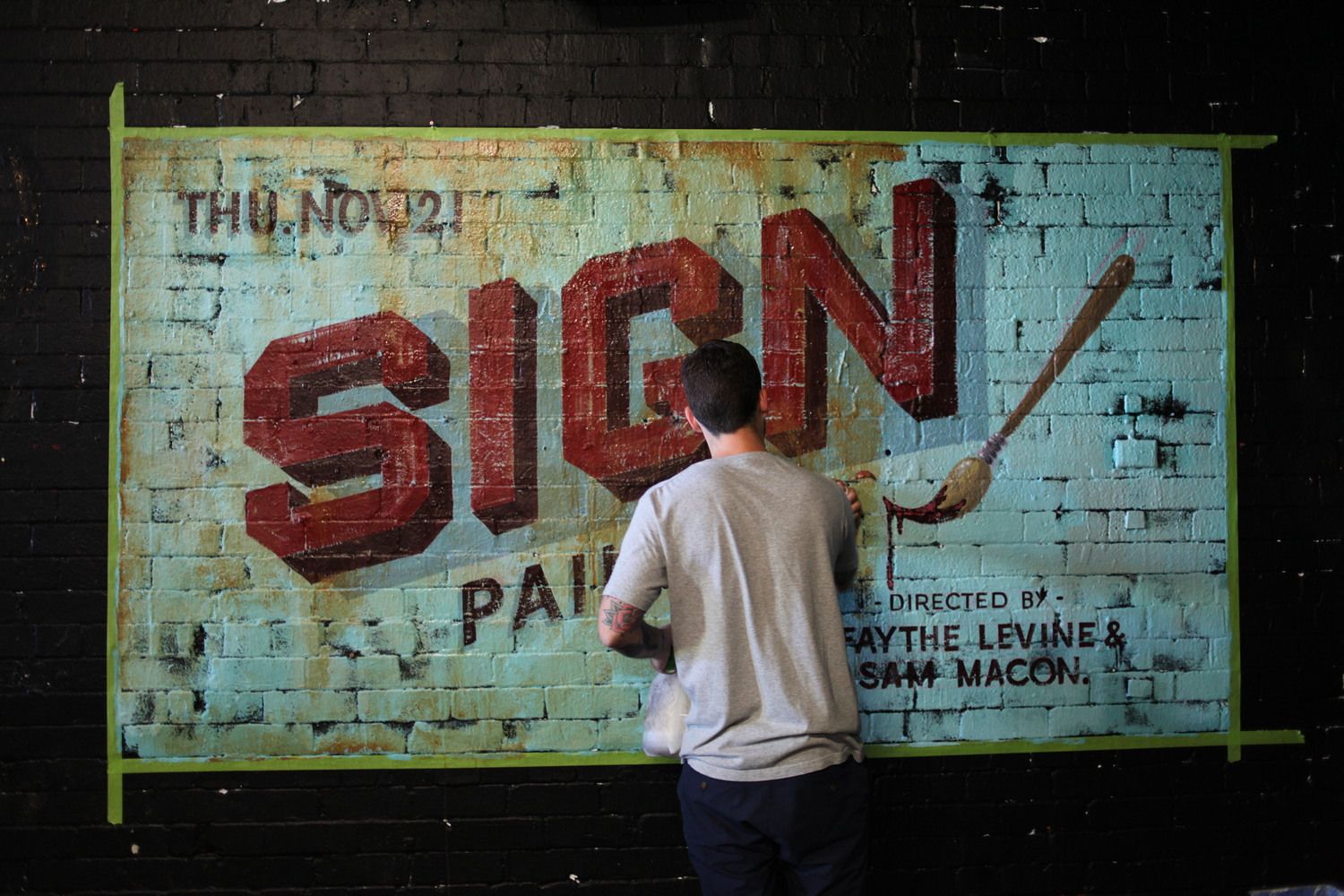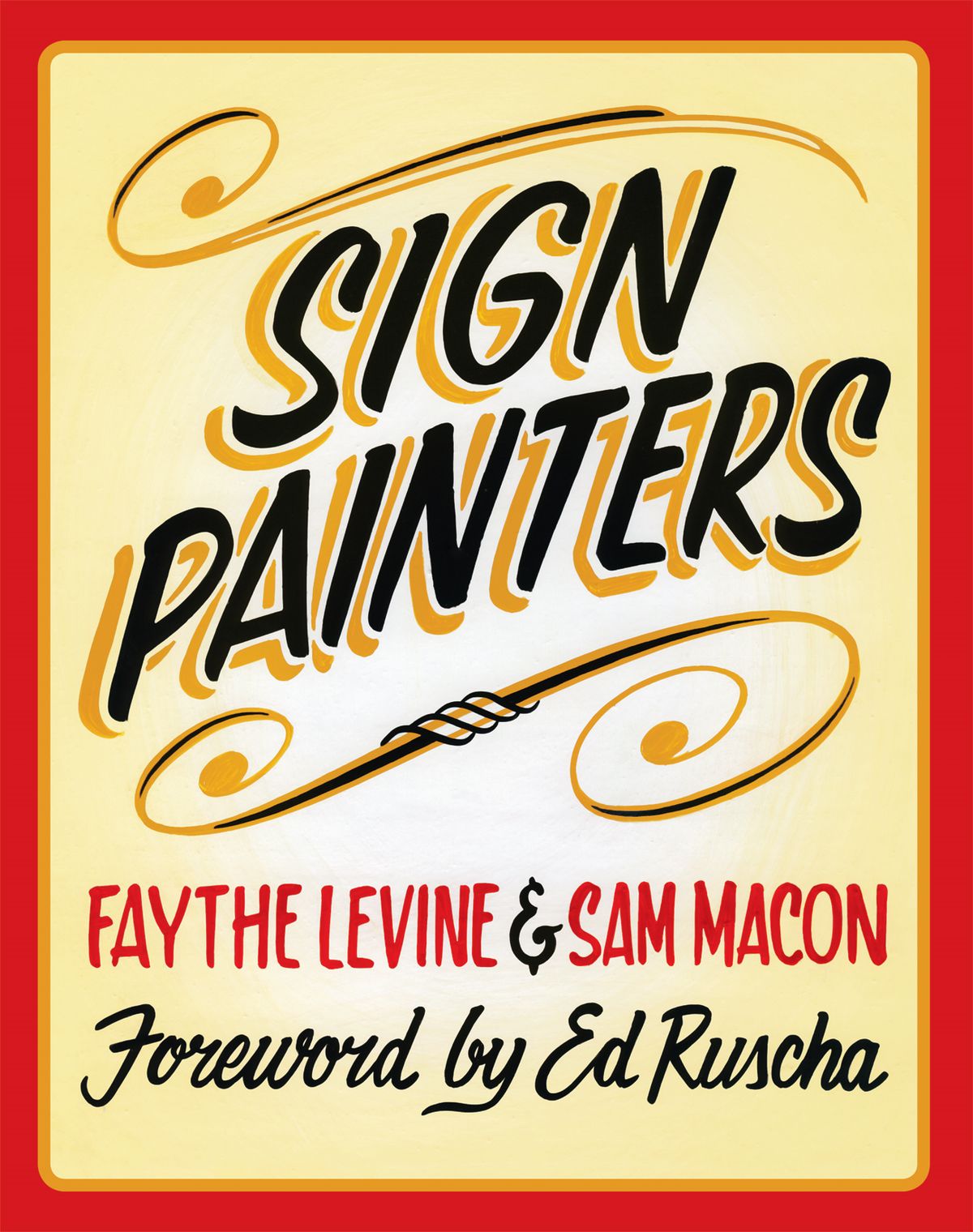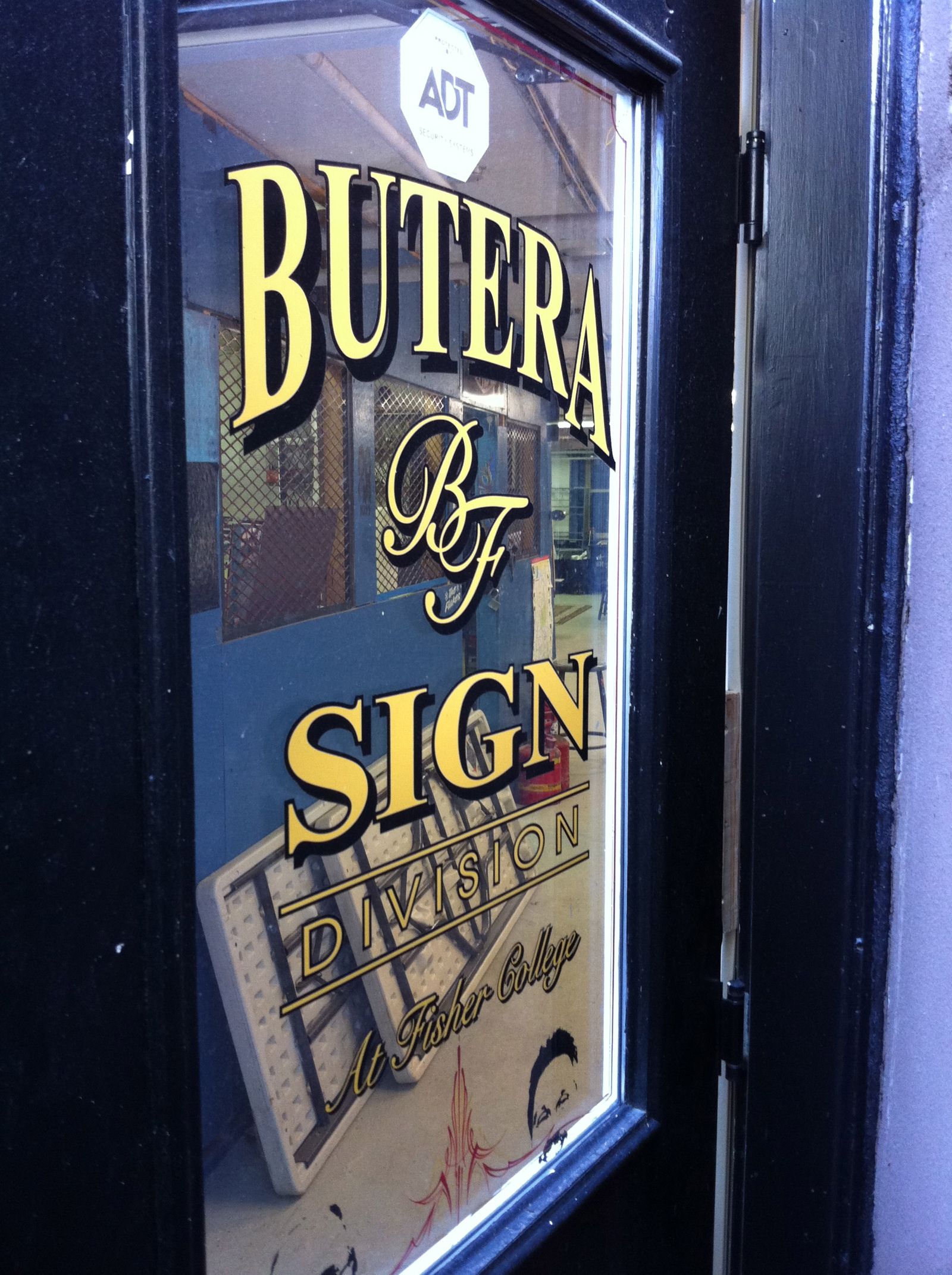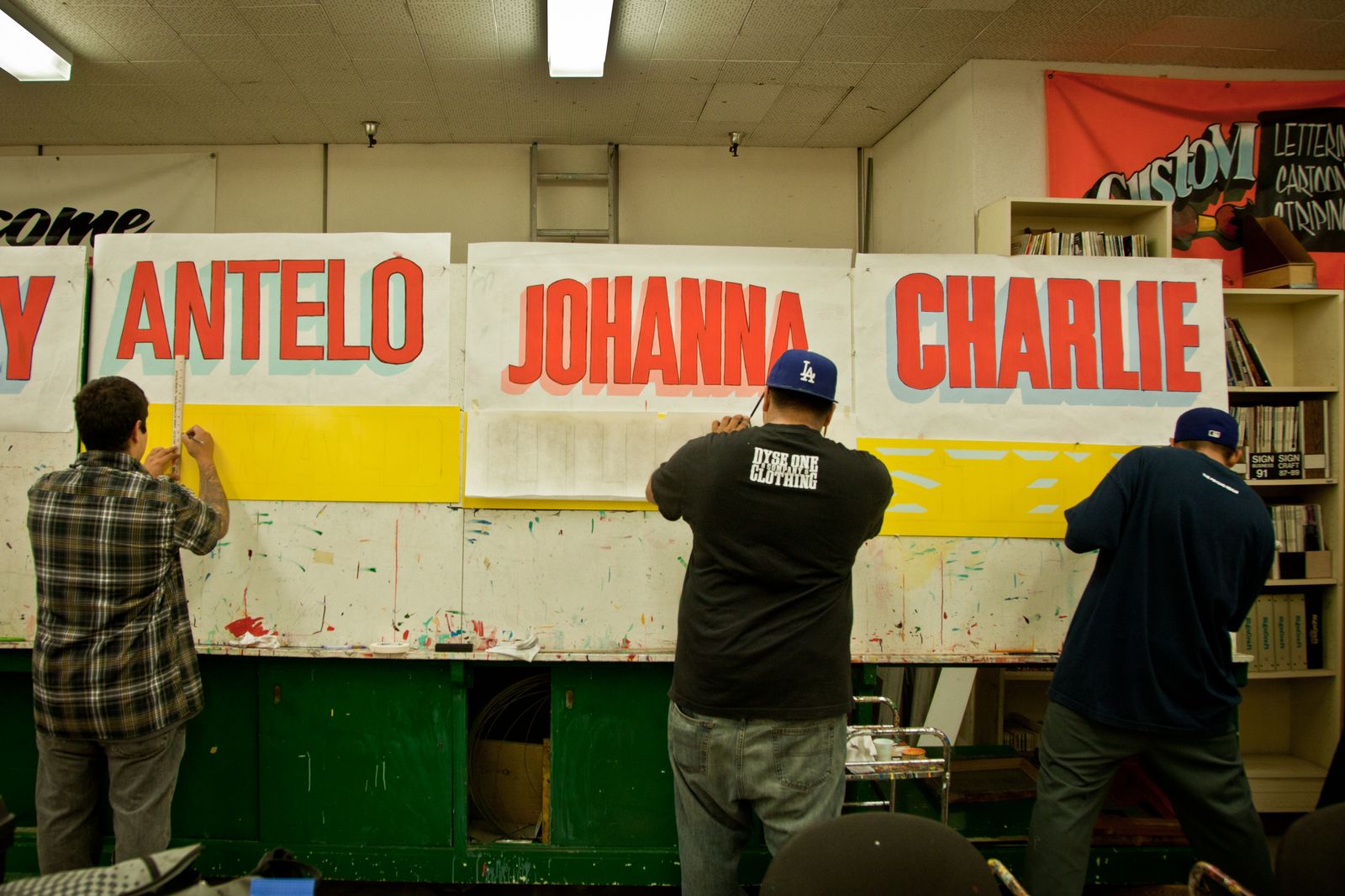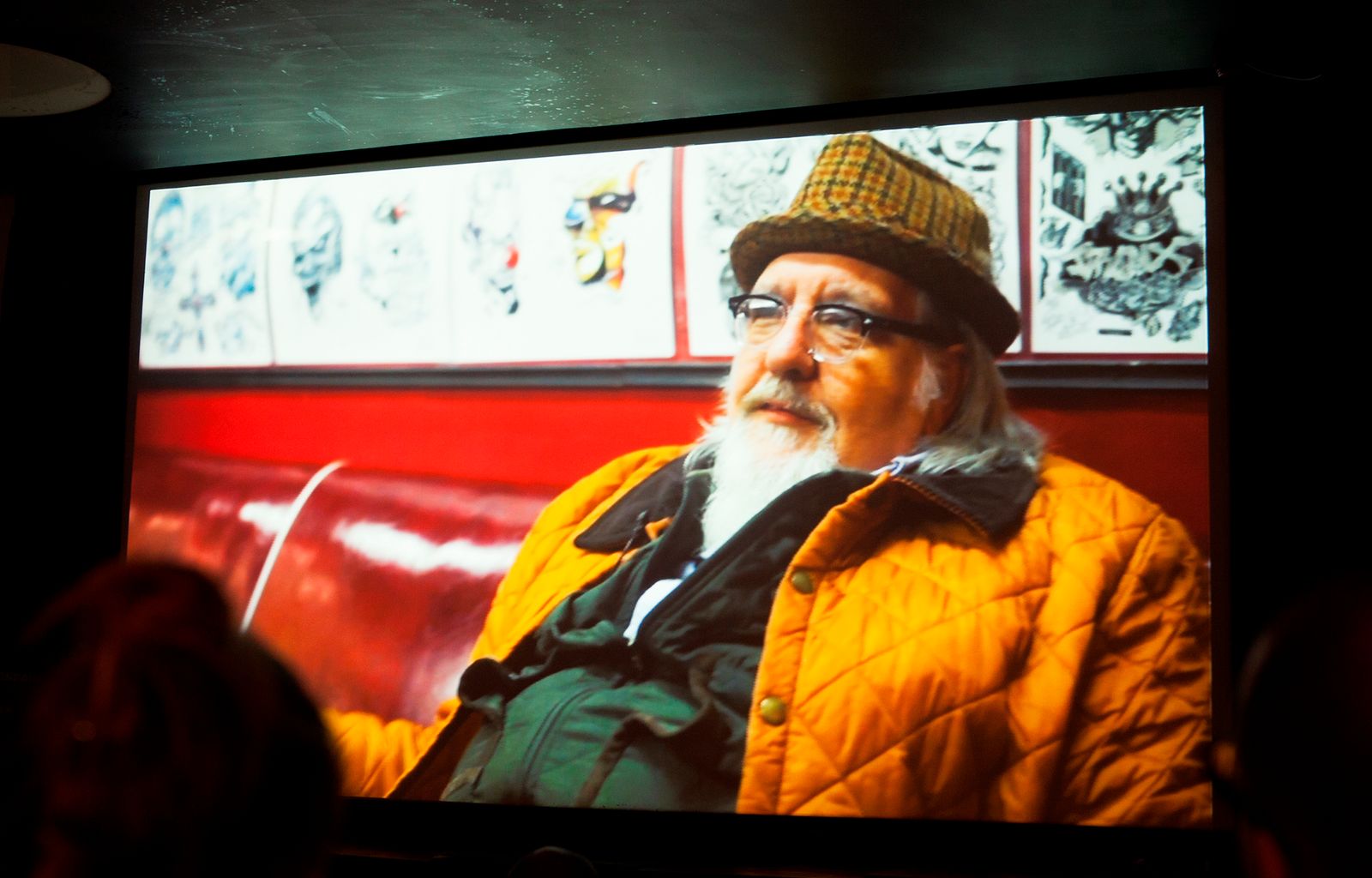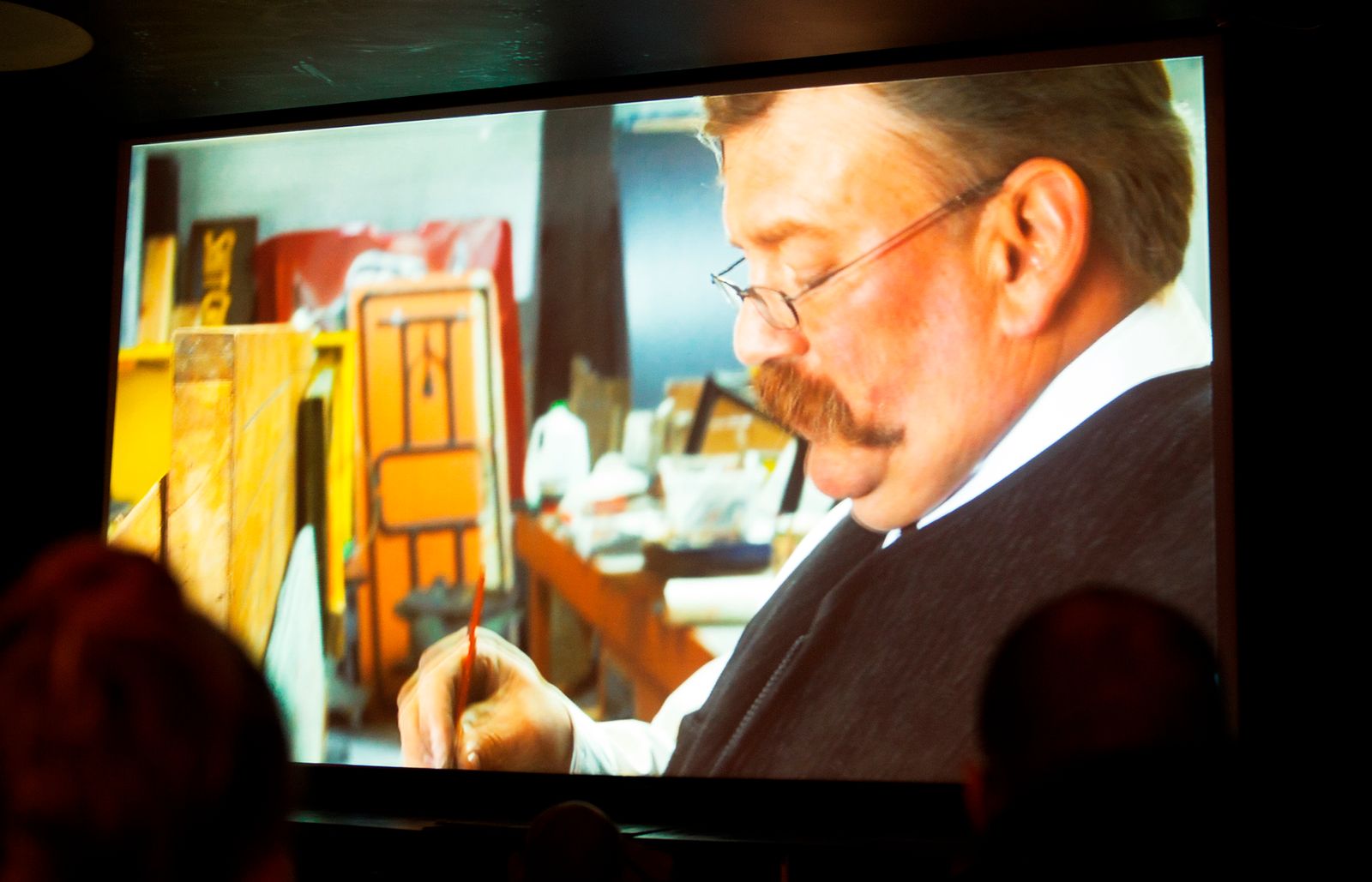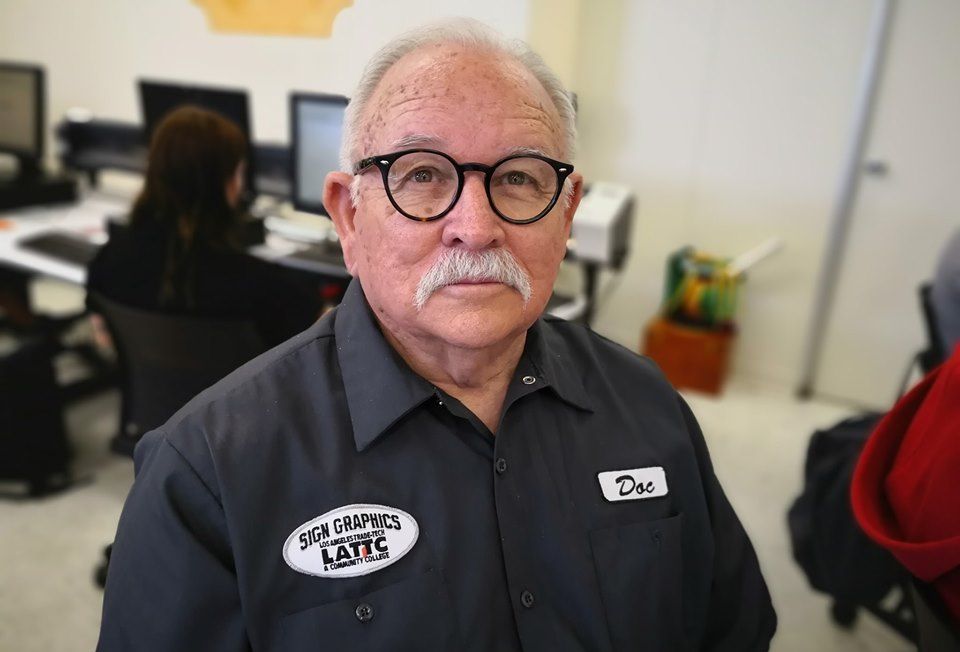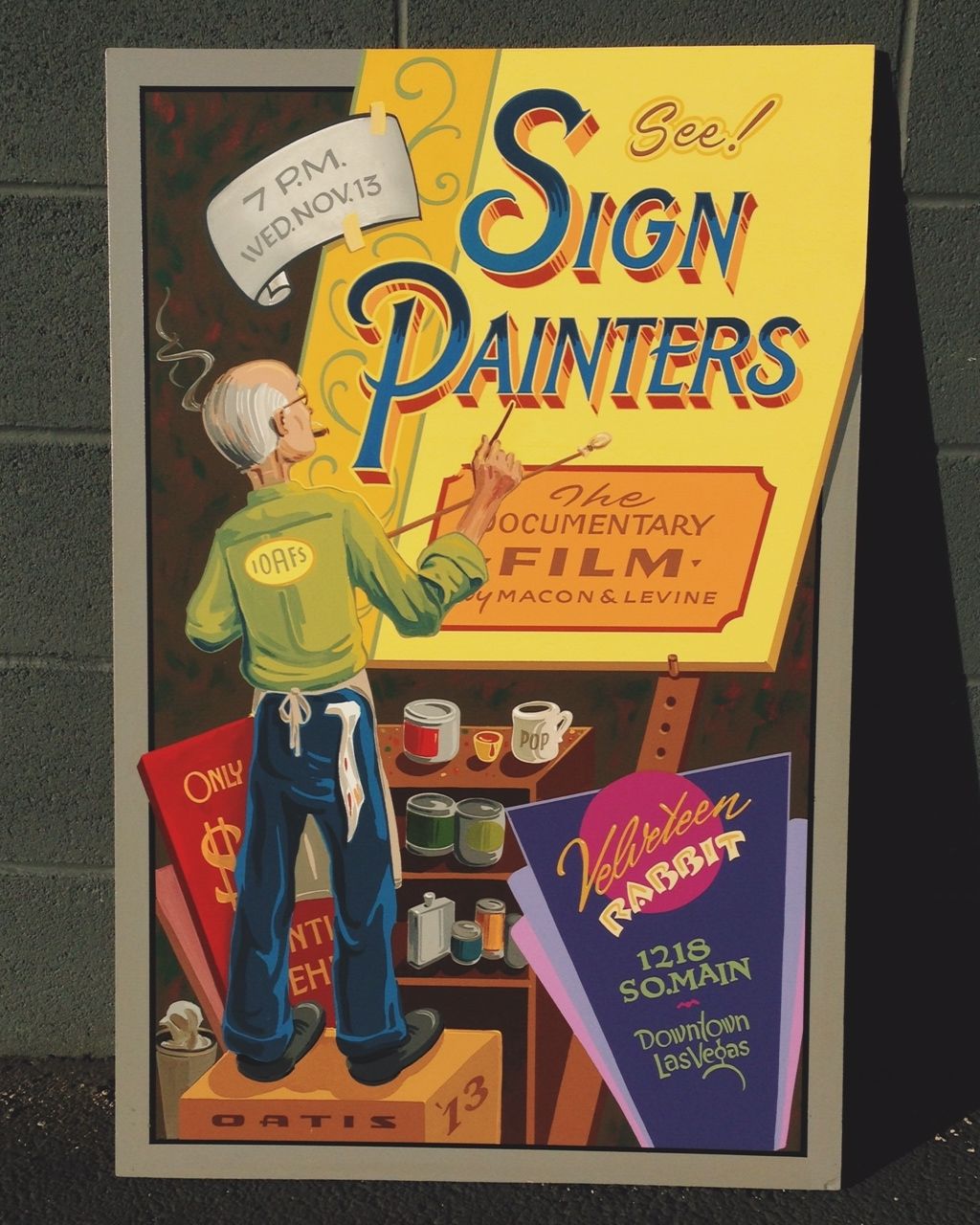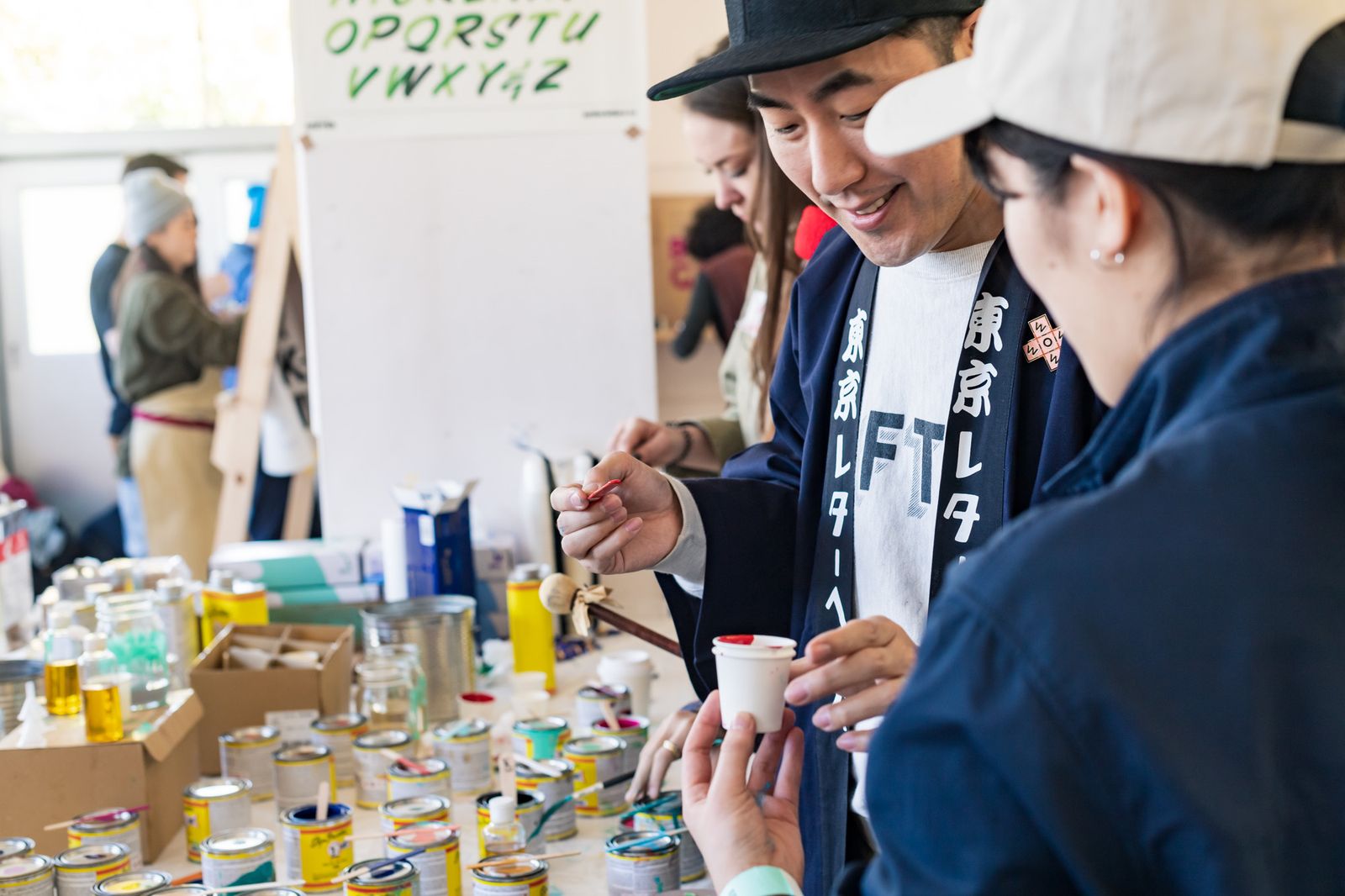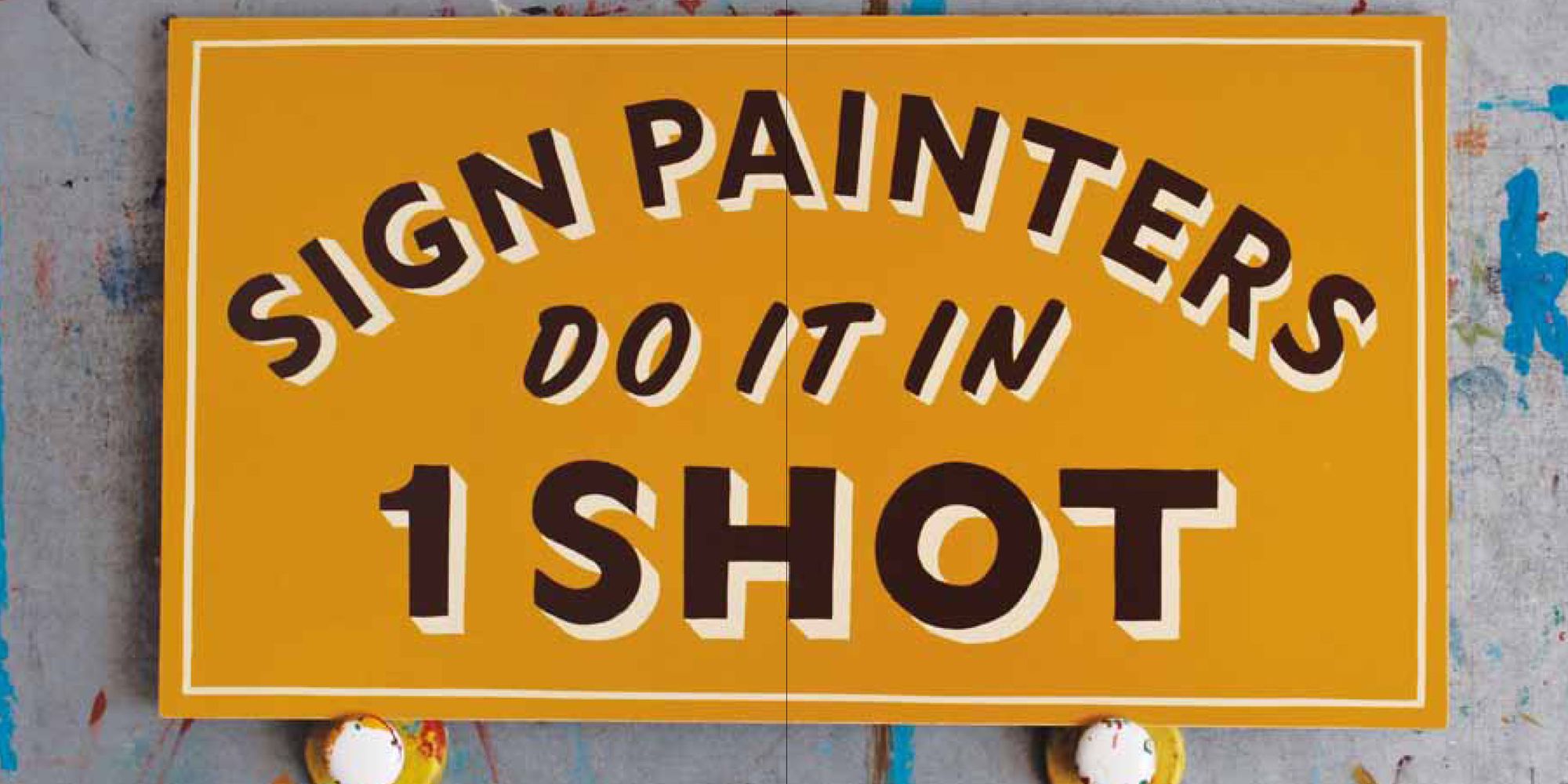This Saturday, 18 March, is the Sign Painters' Anniversary Watch Party. This online event is completely free, but registration is required via Eventbrite. Join the hundreds of people that will be tuned in from around the world for this special screening, with the directors and film's stars in attendance. Sign up here.
I was recently invited by Signlink magazine to write an article reflecting on the impact of the film, and book, Sign Painters (copied below). This is my first bi-monthly column for them, and I've also snuck in a shorter 'Ghost Sign Corner' piece for each issue. While pulling the article together, I approached a number of the film's stars who generously wrote back with very detailed responses. I have therefore pasted the full text of my article below, with a few adaptations for this site, followed by a more extended selection of these sign painter reflections. It's a long read, so grab a drink and settle in...
Sign Painters: Ten Years LaterA decade after the release of Sign Painters, those that appeared in it, and whose lives were changed by it, reflect on its pivotal role. On 30th March 2013, the Smithsonian American Art Museum in Washington DC hosted the world premiere of Sign Painters (@sign_painters). The feature-length documentary went on to be screened in cinemas, bars, lecture halls, and sign shops across the globe. Its impact has been far-reaching, and it helped to usher in a new generation of sign painting aficionados and professionals alike.
Sign Painters (official trailer). The Film in ContextThe film (and companion book) came at a moment when there was a hankering after the hand-made in the face of cookie-cutter aesthetics emanating from digital and print technologies—sign painting itself had suffered years in the doldrums following the arrival of vinyl plotters into the market. Faythe Levine (@faythelevine), co-director of Sign Painters, had already observed the turning tide in her 2009 book and film, Handmade Nation. Sign Painters, the book, and its precursor from Faythe Levine, Handmade Nation. The juncture was exemplified by two of the sign painting courses featured in Sign Painters. One of these, at Boston’s Butera School, is shown closing down on the DVD extras, while the Sign Graphics Program at Los Angeles Trade Technical College (LATTC) was kept going by its lead instructor Doc Guthrie. Following the film’s release, his course saw enrolments more than double, requiring new instructors to meet demand. Door at the former Butera Sign Division, and student at work on the Sign Graphics Program at Los Angeles Trade Technical College. While some directly credit the film for sign painting’s resurgence over the last ten years, I’ve always thought of it as a catalyst, accelerating a process that was already underway. That is not to underestimate its impact, which was significant—one of its stars, Forrest Wozniak (@forrestwozniak), notes that it “brought sign painting to a broader audience, most notably the art world”. 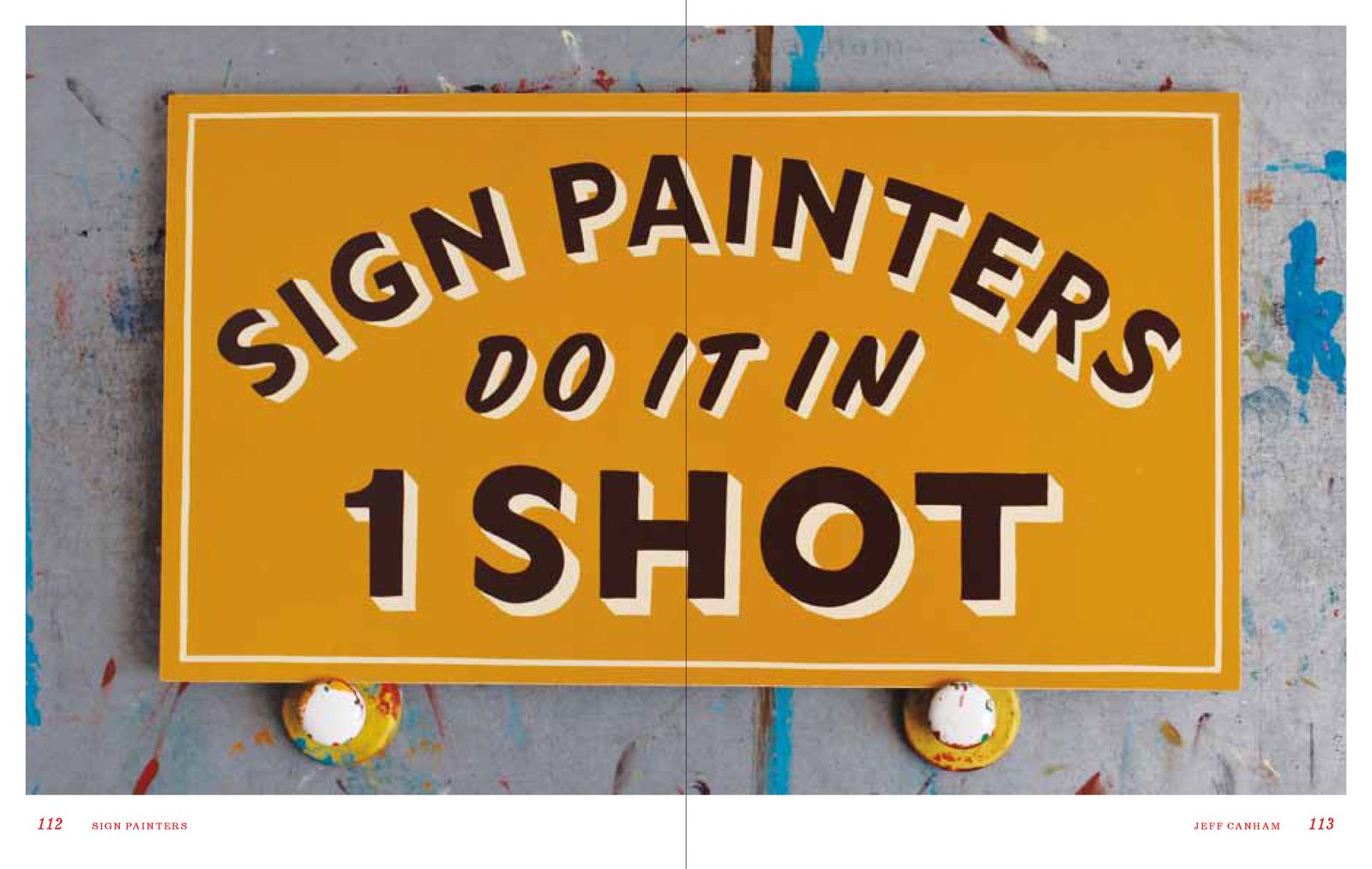 Spread from Jeff Canham's section in the Sign Painters book. An Invitation to PaintIn addition to reaching new audiences in the art, design, and advertising worlds, Sign Painters also inspired people around the world to take up sign painting—it opened their eyes to the fact that this could actually be a vocation. One of these was Barcelona’s Adrian Peréz (@eldeletrista) who was working as a digital graphic designer when the film presented him with a path better aligned with his passions. He “bought some paint, a brush, and started filling sheet after sheet with lines and lines of practise strokes”. Peréz is now one of Spain’s pre-eminent sign painters and gilders, and has also taught the craft to others. Work by Barcelona's Adrian Peréz (left) who was inspired to follow his sign painting by Sign Painters eight years ago, and Bristol's Georgina Tozer for whom the film gave "a sense of closeness and community". Georgina Tozer (@tozersigns) in Bristol had just started her own lettering journey when the film came out, and credits it with “widening my view of what being a sign painter could mean”. It was also a turning point for Dan Ricketts (@stl_sign_and_mural) in St Louis: “I never thought I would be able to support my family through art, but I’m doing it and it feels great”.
A chance encounter with the book in Portland Oregon prompted Nami Oh (@ohnami.signs) to think to herself, “Sign painting is a thing?”. She then saw the film and promptly enrolled onto Guthrie’s course at LATTC before eventually turning her back on her fashion industry career to paint signs full time. And What of the Stars?The film itself grew out of conversations between director Levine, Sam Macon (@sam_macon), and Levine’s friend, and sign painter, Ira Coyne (@icsigns). He recalls that “at the time sign painting was in a dire state; there was very little work and it was still mostly invisible to the public”. This, and the stories he was relaying to them about “a massive gap in generational knowledge”, spurred the directors on to produce the documentary. With Ira’s help, they tracked down the first few sign painters to interview, with each interview opening up new leads to follow across the USA. Ernie Gosnell and Mike Meyer in the Sign Painters film. Photos by A.J. Levy from the 2014 London screenings. One of the later interviews was with Mike Meyer (@this_is_the_real_mike_meyer), which came about because so many others had said they had to speak to him. “I was, and still am, very honoured” says Meyer, a sentiment echoed by Roderick Lane Treece (@customglasssigns) for whom it was “quite frankly an honour to finally have someone consider what you’ve spent your life doing as worthy of such attention”. Bob Dewhurst (@nevadahandpainted) didn’t feel he belonged in the film, but was swayed once he understood that it wasn’t “an exposition of who’s the best sign painter, just about what kind of people became sign painters, and what their world was about”. He says that the film gave him and the trade a greater sense of “pride and enthusiasm”, and that it “had a great effect on public appreciation of hand-painted signs”. The impact of the film on the work of some of its stars was also notable. For Meyer it “put me in a position to do something I didn’t know I could do: teach sign painting”. Wozniak recalls that “it ultimately allowed me to take the leap and quit construction” while, for Norma Jeanne Maloney (@redrider_studios), “at the age of 50 I was finally making a living with my brush”. Coyne also saw his fortunes change with “the book and movie making the trade sustainable for me for the first time ever”. I would like to take this opportunity to pay tribute to those in the film that are no longer with us: Keith Knecht who died while it was being made, and Robert Curry, Justin Green, and Doc Guthrie in the intervening decade. The Next GenerationMany of Sign Painters’ stars talk of the bridges it built between themselves and others in the trade, including those following a new path having seen the film. Damon Styer at San Francisco’s New Bohemia Signs (@nbsigns) explains: “One of my painters, Shinya (@moderntwistsigns), came here eight years ago to intern. This was on account of the film. He later flew me to Tokyo to run a workshop, and now he's back in San Francisco working for me.”
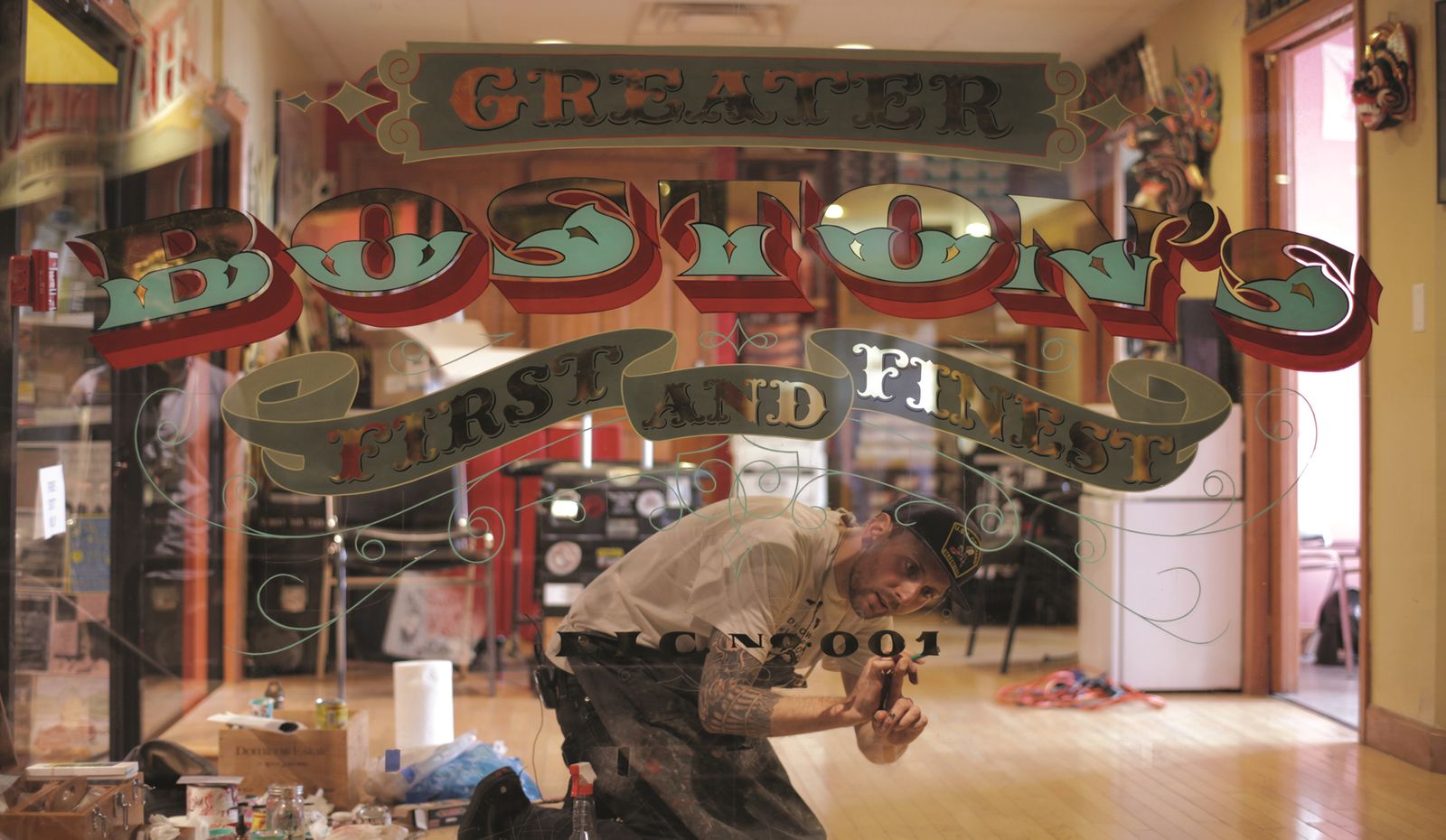 Josh Luke learned the trade at New Bohemia Signs in San Francisco before moving to Boston to start Best Dressed Signs ( @bestdressedsigns). Phil Vandervaart’s advice to those starting out today is to “learn to give a good finished product before you worry about the money, and get over your ego which automatically gets wrapped up in the money”. And Treece reflects on the dream that can be realised through a life in sign painting: “Having Sam [Macon] and Faythe [Levine] come along with their dream helped spark great memories of a lifetime of creating cool things. Of living a dream of being on your own, working and playing on your own terms. I see so many young people today that are trying to live the dream, and I wish them all the best.”
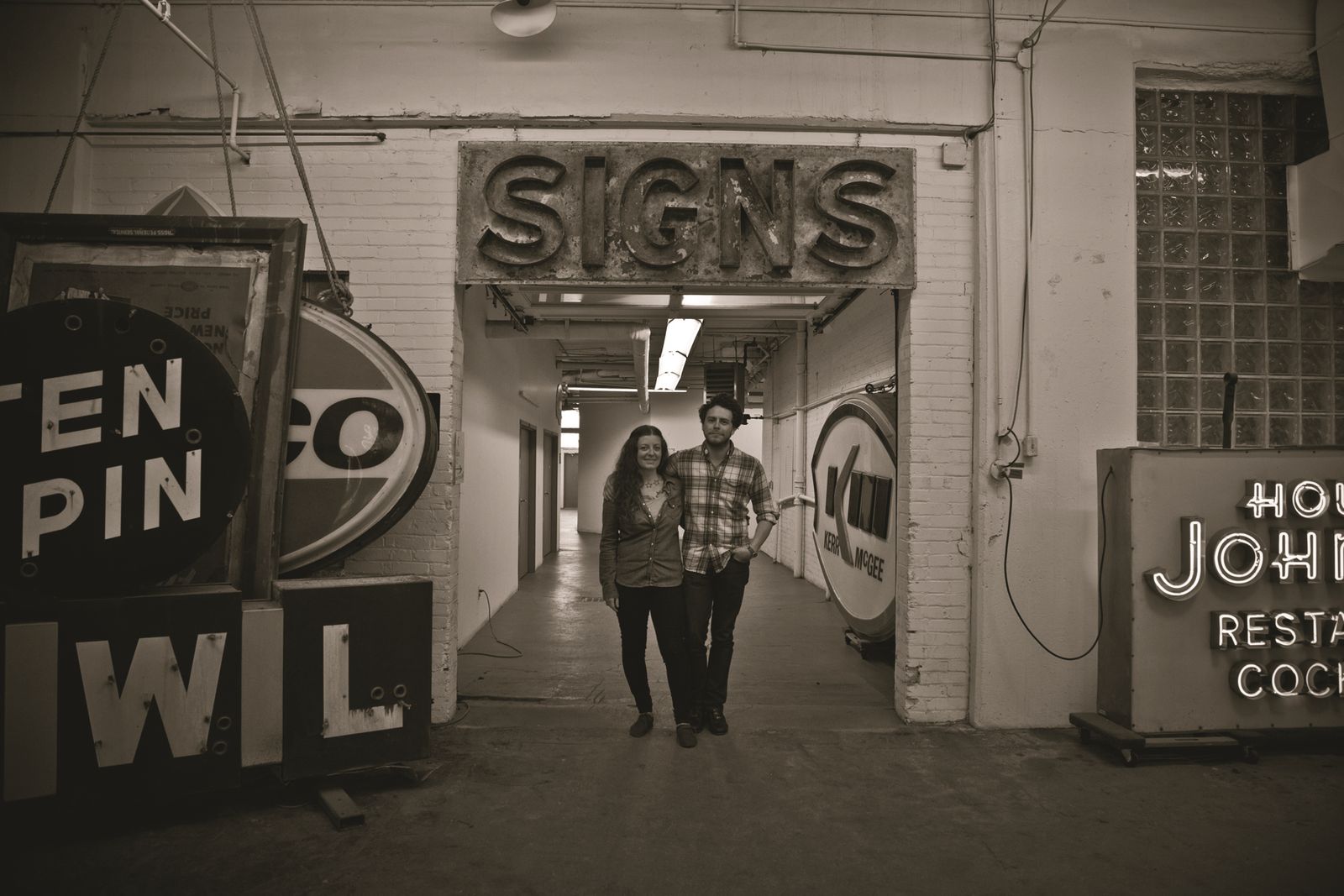 Sign Painters' directors Faythe Levine and Sam Macon.
Further Reflections on Sign Painters' ImpactFor the article above, I contacted some of Sign Painters' stars to ask for their reflections on the film one decade after its release. I received replies with a lot more detail than I was expecting, and these had to be heavily edited for the article above. Here I'm delighted to share a lot more, and would like to thank each of these sign painters for taking the time to give such considered responses. For those that would prefer to read these answers in printed form, I have also made them available as a PDF. It's 14 pages in total, and can be downloaded below.
Ira Coyne"I'm old friends with Faythe. We were part of an overlapping punk and art scene in the late 1990s in Seattle and Minneapolis. We always maintained contact and shared our happenings via phone and mail.
"In 2010 or so, she had just wrapped up her last book tour for Hand-Made Nation. I asked her what was next and she literally said, 'you tell me'. At the time, sign painting was in a dire state. There was very little work. It was still mostly invisible to the public and designers, and the chances of learning from an older painter were extremely rare.
"I was lucky enough to have a mentor, but I kept hearing stories from him about how his peers were dying off. Sean Barton had a mentor in Los Angeles who had just suddenly died, and I realised that it was partially going to be a personal responsibility to start the process of preserving/discovering/uncovering what my friends and I knew about traditional sign painting, despite there being limited resources and this massive gap in generational knowledge and practitioners.
"I met Sam later that year. He was a very welcoming and enthusiastic filmmaker with a semi open schedule and I related my experience to him. Sam and Faythe took the ball and ran with it. We collaborated on a basic roster of contacts—I had a mental list and they started a Facebook campaign reaching out to anyone and everyone to ask if they knew any sign painters, or were sign painters, and the roster grew from there.
"That's how the book and movie ended up being partially about the gap between the old-time journeymen and the headstrong, younger autodidacts. When they were zipping up the project, they tapped me in to provide the work for the book cover and some of the opening montage for the film alongside Bob Behounek and Jeff Williams.
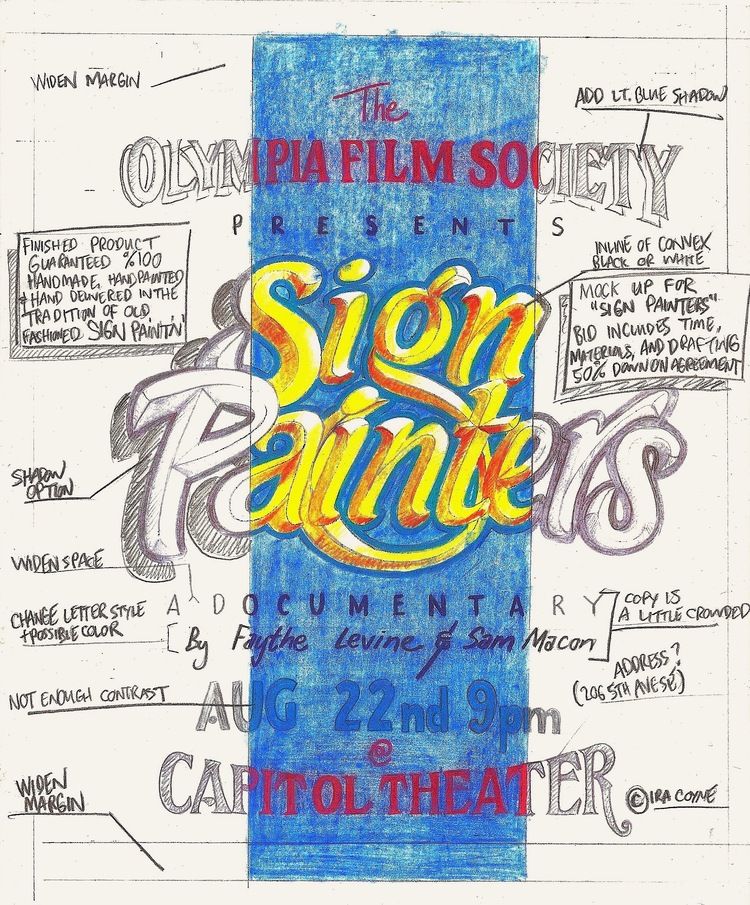 Ira Coyne’s publicity piece for his local screening is a play on the traditional approach to partially rendering a drawing in colour when presenting a sign concept to a client. This insider joke went over most people's heads, including local sign painter John Hannukaine. Coyne recalls that, “I gave one to him and he said, 'I’m a little busy right now, why don’t you paint this yourself?' I said, no, that’s the flyer, it’s done.” "When we filmed the segment in Olympia, I was working part-time at a foster home for boys. The previous night, a boy ran away and I was up until 6am tracking him down and talking the police into sending him back to the foster home in my care. I held this extra job down for about a year and a half and I made an extra, and very badly needed, $600 a month. I was lucky to make another $600 from sign painting.
"Olympia is a small town and just didn't have the financial umph or visionary thinking I needed to sustain a fair living. The sign we painted for the Indian restaurant was something I approached them about just so we would have a site for the documentary. They didn't understand what I was trying to do and I was only able to get $100 for it. I did that because we couldn't just sit around and talk about painting; we needed something palpable for the audience.
"That was just the economy that I was working in. There wasn't very much interest in hand-painted work then, and we were so hungry for jobs that paint ended up becoming a cheap default for the clients. I made 4’x8’ ply signs for $500, a-boards for $200. All of that changed right after the book was published. It came into the hands of designers at big companies and on Instagram it started becoming chic, and the phone started ringing daily.
"All of a sudden everyone knew what it was that we were doing. Before that, when I told people what I did for a living and they would say ‘What is sign painting?’ Now there was a movie to explain that to them, and everybody wanted it.
"I consulted with John Hannukaine on how to navigate this new market with pricing and he basically said, ‘Now is the time to set the standard, charge as much as you can, the bar should be set high because you are in high demand’. I learned that I could pick and choose my battles as far as making signs that are affordable to the public, and maintaining a fair-to-me income. The book and movie made the trade sustainable for me for the first time ever.
"In my opinion, the film and book catapulted the industry into what we know it as today: a very healthy and established renaissance of sign making. We now have an eager student base and a mostly welcoming older generation that is happy to be acknowledged and willing to share what they know. Moreover, the design sector is more aware that hand painted techniques are available, and can be superior to other applications.
"Our urban landscapes are decorated so beautifully now and the ‘creeping sameness’ is somewhat held at bay in well-cultured areas. Sign Painters also put me in contact with older painters who had retired and wanted to pass on their libraries and tools and stories to me. A lot of older painters called me and said, ‘hey I have some stuff for you, come over and chat, I'd like to meet this young painter I didn't know existed’. Of course, I obliged and ended up making a lot of friends that I could lean on for advice and resources. I know from these interactions that Sign Painters has had a profoundly positive effect on the lives of sign painters who made it through the 1983–2012 lonely gauntlet of invisibility.
"One other thing about the film is that it’s the first documentation of the trade that speaks to an audience outside of the industry. All of our other sources are industry magazines or instructional resources. It’s the first time that sign painting has been celebrated in a personal and dramatic arena. That’s why it’s popular and trending. Sign Painters makes the practice available to the public in a way that it never has been before."
Ira Coyne / @icsigns
Bob Dewhurst"Damien and Scott at New Bohemia Signs told Faythe and Sam they should look me up, otherwise I’d never have known about the movie. I told them from the beginning that I didn't belong in the movie because I see myself as more or less a hack sign painter—I just love it a lot and have been doing it for a long time. But they said the movie wasn't an exposition of who's the best sign painter, just about what kind of people became sign painters and what their world was about.
"They arrived at a very difficult time for me in business because after some 20 years next to the San Francisco fire department, (unsuccessful) efforts were being made to close me down—I didn’t have any digital photographs at that time, nor any work In the shop to show them. So, the movie and the book were a tremendous shot in the arm for me psychologically and after it came out I came into contact with much more of the sign trade, and felt a lot of pride and enthusiasm.
 Bob Dewhurst, Sign Language, during the filming of Sign Painters. "I actually cried when I watched the movie because it stirred up so many memories, as well as a deep nostalgia for a world that's continuing to fade out like a hand painted sign on a coffee shop window. I know probably half the people in that movie as personal friends, and a lot of people who could have been in the movie and been just as interesting. I think the film had a great effect on public appreciation of hand painted signs, and inspired a lot of artistic young people to jump in continuing a renaissance of hand-painted sign art.
"Damien at New Bohemia Signs has been particularly instrumental in training many sign painters in San Francisco, as he is one of the only shops I know that has apprentices working full-time. Now that we've lost Doc Guthrie down in Los Angeles, we'll have to see how the upsurge of new painters will continue. Now, with YouTube, people can learn quite a bit without having to know a sign painter personally, haha.
"Faythe and Sam are both wonderful people and fascinating artists in their own right. I'm very grateful to them personally and for what they've done."
Bob Dewhurst / @nevadahandpainted
Josh Luke"In 2010 I was working at New Bohemia Signs (NBS) in San Francisco when we got word that a film crew was planning to stop by the shop to do some interviews for a sign painter movie. The day they came to film was pretty exciting, and we did the place up with signs everywhere to really ham up the whole New Bo experience.
"When Faythe and Sam showed up, I immediately recognized Sam from my time playing in a hardcore band several years prior. Our band had stayed at Sam’s house in Milwaukee while on tour, and Sam at the time played in a well-known band called Since By Man. I think at that moment, some of my nervousness about being filmed subsided and maybe it was that connection that led me to become more involved with the film as it progressed.
"Soon after they filmed at NBS, Meredith and I moved to Boston and started Best Dressed Signs. We reached out to let them know that we were in Boston now and had started our own sign business and suggested they come to film, as Boston also had one of the country’s last sign painting schools, Butera.
"At some point after they came to Boston, I talked with Faythe and Sam about doing some lettering for the book and film. Being that I was fairly new to sign painting, this was both a super exciting and extremely scary task to take on. I was neither skilled nor qualified to do a proper job on the lettering, and looking back it definitely shows. Thankfully my motto has always been to take on anything that makes you nervous, and I always find that in the end you come out having gained something and are more skilled than when you began. When I look back, I feel super proud and honored to have contributed to such an impactful film and book…Now if I only had another crack at that lettering, haha!
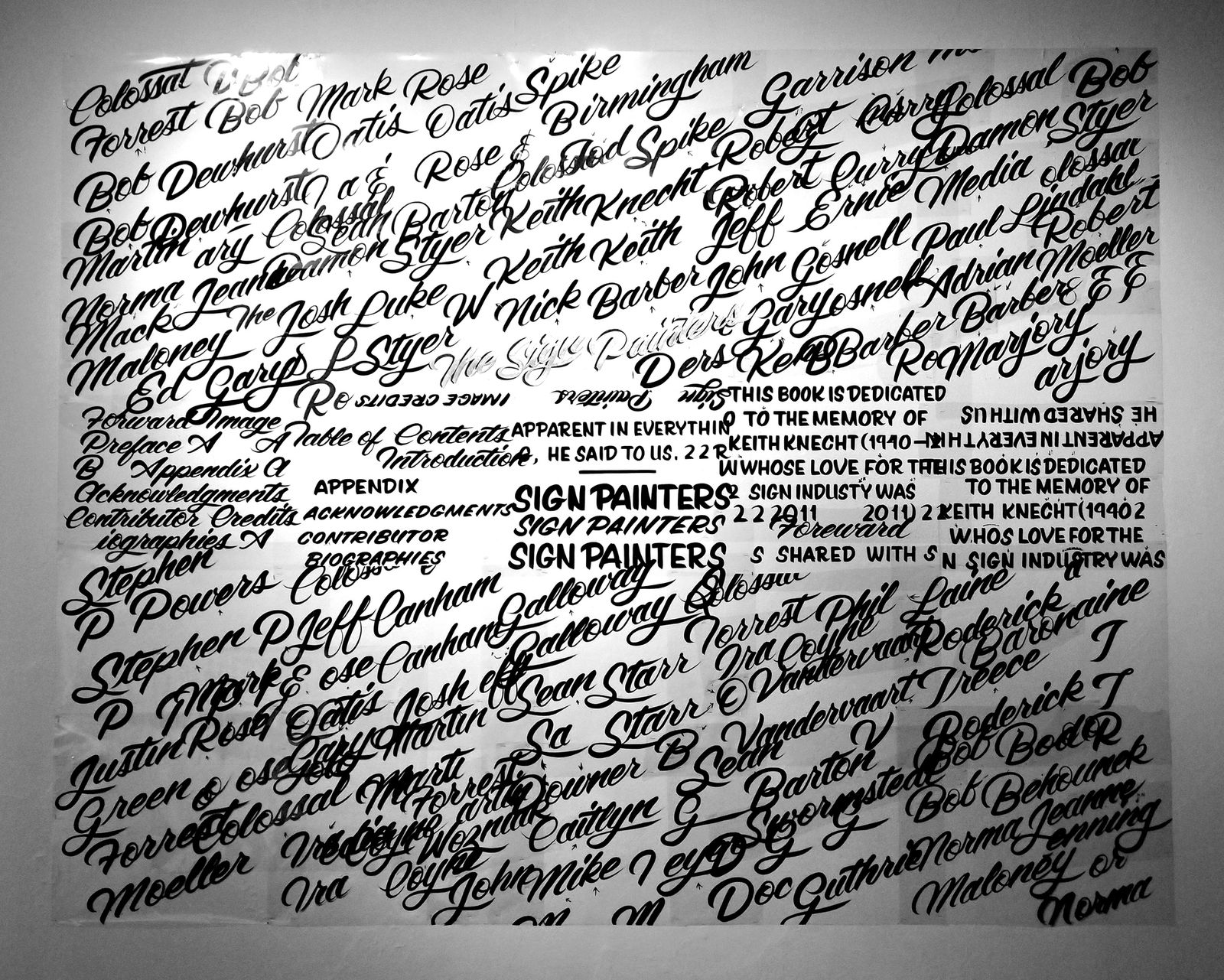 Collage of original lettering by Josh Luke for the Sign Painters book. "It’s been really incredible to see how many people around the world have been drawn to sign painting since the book and film were released. This film highlighted a craft that for a long time had become a bit hidden or niche. It did for a lot of people what New Bohemia did for me when I first was introduced to sign painting. It’s what I like to call the 'holy shit this is so F'N cool' moment—when you see all this awesome art in all its glory displayed in front of your eyes and your first thought is, I want to be a part of this!!!
"One day I would love to see all the other interviews that Faythe and Sam did while filming. It'd be really fun to see the footage from New Bohemia with Caitlyn Galloway, Ken Davis, and myself in our early years, BDS in Boston, Derek McDonald, and possibly more that was filmed but didn’t make the final cut. Hoping some of that footage comes out with future anniversary editions."
Josh Luke / @bestdressedsigns
Norma Jeanne Maloney"I was visiting my big sister in San Francisco where we both used to live. She has a ritual of reading the New York Times every Sunday morning—she’s a copywriter in the advertising business and likes to keep up with the latest creative endeavours, current events, and human-interest articles.
"She said, ‘Norma Jeanne, you need to look at this, someone made a documentary about your trade’. I found this incredibly hard to believe because for decades when someone asked me what I did for a living I would literally have to explain what it was. Shortly into any of these conversations, the listener would get lost and, eventually, I would just evade the question. Frustrating.
"As we were in a hurry to catch our flight back to Austin, she graciously gave me the section of the paper so I could read it on the plane.
"When I went to my studio the next morning, I was able to get a contact phone number for Faythe and I told her I was so excited, and also curious, about the documentary and I couldn't wait to see it. She said, ‘holy shit, we aren't done, we are still filming, where the hell are you?' I told her I was in Austin and she said they hadn’t been able to find any women in the trade, and were coming to see me!
"Faythe also asked me if I knew any other sign painters in Austin and I told her about Gary Martin, the only one I knew at the time. In 2008, the economy was terrible and since I had moved to Austin in 2006 sign work was very slow. I had called Gary when I moved to Austin to introduce myself, and that is an old school thing to do when you show up on someone's turf. His work was all over Austin, specifically South Congress, and you just don't go cold calling clients where someone has put in the time and made their mark. At least that's how it used to be.
"Gary was not thrilled about it [the film] and said he wasn't interested. He too was in disbelief that anyone would even make the film, much less watch it. But I told him this was our opportunity to finally be able to celebrate and talk about a trade that had all but been forgotten. Our clients were a special breed of folks that wanted something unique and tangible, and were hard to come by. I passed on his information to Faythe and they went to see him in the morning and then came to me that afternoon on their arrival from Los Angeles.
"They were quite exhausted from their night out in Austin, and Gary had taken them on a drive to look at his work around the South Austin area. When they arrived at my studio, they asked if it would be okay to just interview me without the tour of my work, which would have been short and not very impressive as there was not a lot locally as some of my work was on ranches.
"And thankfully I had a story: a story of never giving up and being turned away dozens of times when I just wanted to talk to anyone who was still doing it in the early 1980s; the story of Calver Guthrie who saved me in Kentucky when I was painting a window with the wrong brush and paint; and the story of Mike Stevens' giving me the opportunity to have two lessons with him in an empty class where no-one had signed up but me, and he tragically passed away during the second of our six week workshop. I was just about to give up when I went to his wake and met his daughter. She showed me his journal where he had been writing about my skills, and my unwavering tenacity to want to learn a trade when the vinyl machine was destroying the craft. This inspired me to keep going.
"So Faythe, Sam and I had an amazing time together and I got to tell part of my story. It was amazing. A few months after the interview, Faythe let me know they were going to do an accompanying book, and that I had been chosen for it. This entire experience, the film, the book, the filmmakers, changed my life forever.
"The personal impact the film had on me was overwhelming. The first screening I went to was in San Antonio and I was asked to do a Q&A. Friends and family drove from Austin, and I was surprised at the attendance numbers. There were many old timers, now retired, that were so pleased and proud, but many were anxious to tell me they switched to vinyl for their very survival and they believed I was being judgemental in the film. It was an honour to meet them, and just explain on my end, that is a choice I couldn't have made, and I was sorry that they had to. We were able to make peace and find a place of understanding about our trade’s demise.
"Faythe called me and said someone from the Times wanted to interview me. She said that at this point in my career I was to never say no to any opportunity, and I didn't. I was on NPR, in The New York Times, and I was able to do screenings at museums, and meet designers, architects, and young creatives that were fascinated by the trade.
"Sam and Faythe did an amazing job on this project in my opinion, and many were upset to not be involved and thought the film lacked substance. But at every opportunity I was able to say that this endeavour was clearly done out of love and respect for the craft, that there is no way every story could be told, and it was only a small fraction of them, but in my opinion it gave a great rendering of what kind of characters we are.
"Bob Dewhurst and I have been friends since 1989. I had to get a job at a vinyl sign shop to put myself through college, when Bob walked in. He knew my boss and was asking him if he had any work, anything at all. My boss explained, ‘nothing with a brush, Bob’. Bob was covered with paint, his big paws were covered with dirt and grease, and when he left the office, he was kind and thanked my boss. (I thought he was beautiful, and fascinating, and he was a sign painter. I had to meet him!)
"My boss said this, and this is one of my favourite stories to tell now, now that everyone can understand it: ‘It's sad really Norma Jeanne… he's a sign painter". When Bob told me he was going to be in the film, I said, ‘this will be your time to shine my friend. Hold on, you're about to fulfil your dreams of getting out of San Francisco and living off the grid, which he did’.
"After the release of the film, I was working for designers, architects, and repeat clients including brands like Starbucks, MOD Pizza, Facebook. The work was diverse and I was making a living. At the age of 50 I was finally making a living with my brush.
"I got calls from women all over the world asking for tips and opportunities, and I never turned anyone away. And I got to discover an entire world of signwriters who had, too, stayed the course.
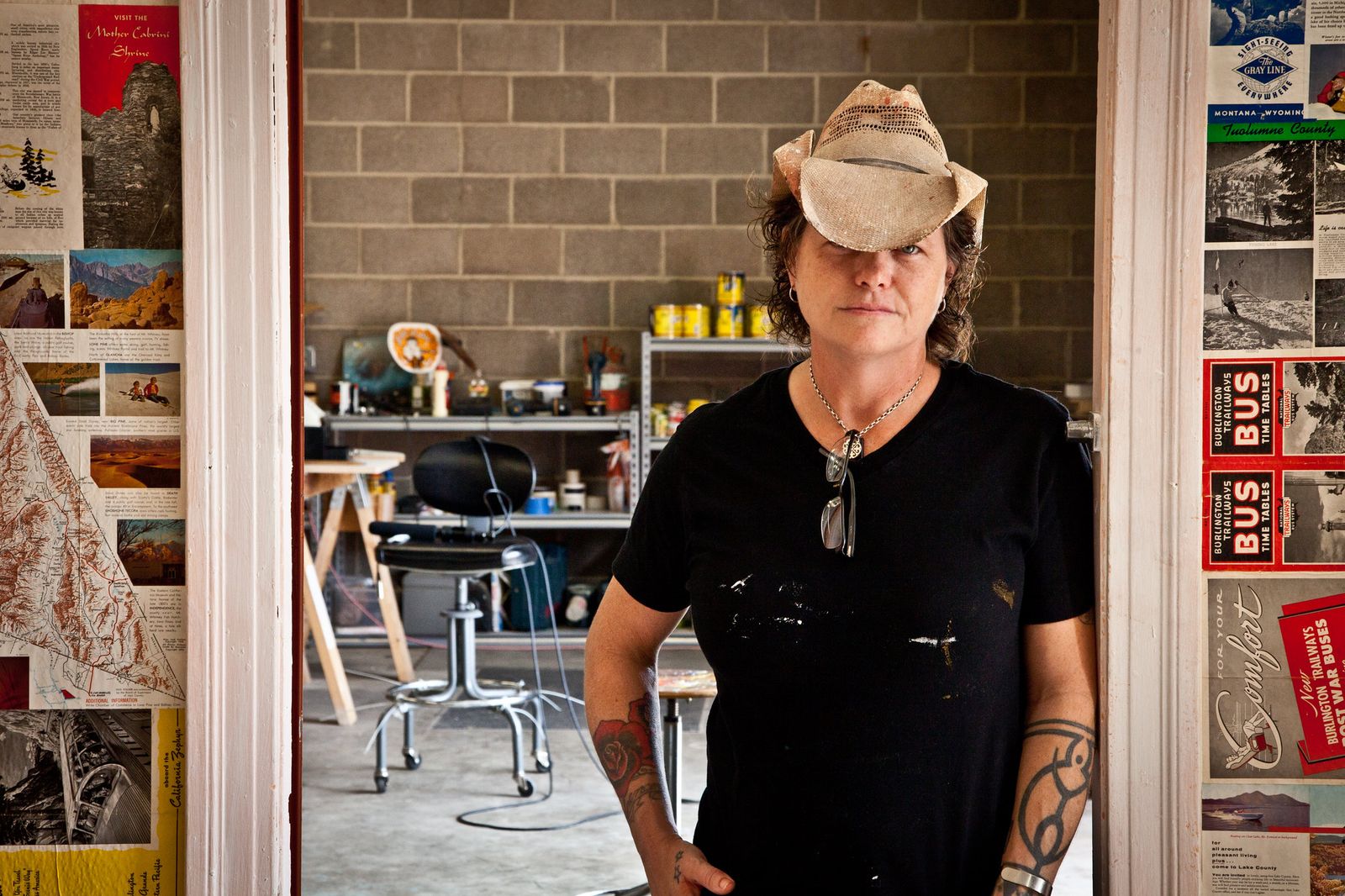 Norma Jeanne Maloney, photographed during the filming of Sign Painters. "The personal impact was not just never having to explain again what a sign painter was, but having the thing I loved most in the world getting the recognition it deserved, and that was much needed to keep it alive. I truly believe that was because of this film. It paid tribute to the craft’s history, the part it plays in defining our landscape, the contributions it has made to the world of design, and the aesthetics of lettering: that typography is not just a font that anyone can play with—it is to be respected in all its forms as not just a form of communication but a thing of beauty.
"I can only imagine how many lives it has changed and the careers it has created. In the three years that followed the film, I did endless interviews, had opportunities to give back and teach, met and mentored young women who are now just killing it out there. And through it all, forming lifetime relationships. I could never thank Faythe and Sam enough.
"As far as the changes in our trade, there have been many. The digital world still has an impact on what we are seeing, good and bad.
"Sean Starr and I were talking one time about it; he said it took him years to be able to say he was a gilder, and it took me about eight before I actually called myself a sign painter. There are youngsters out there that are paying attention and doing masterful work, and also using old school etiquette in their dealing with clients and fellow sign painters.
"But sadly, it can be a quick way to make a buck without the skills needed to really do it right for the client: people that have painted for a few months are teaching. A lot of really bad things were said about ‘old timers’, once the romance of the film went away, so did treating each other right and, as happy as I am that the craft is still with us and thriving, it will get lost again, I'm sure of it, once the coolness factor goes in another direction. I remember saying that you shouldn't be doing this if you don't absolutely just love letters so much it hurts—that got a few laughs.
"The film was a masterful piece of work that captured the essence of us, the importance of the work, the significant historical mark it has made on the landscape of America, and the importance of craft; tangible things that count.
"The best feeling in the world is to paint a storefront and watch those brave folks that are starting a small business see that it is real now. There it is. Pretty cool."
Norma Jeanne Maloney / @redrider_studios
Mike Meyer"I was contacted by Faythe and Sam. They told me who they were, what they were doing, and they said everyone they interviewed said they needed to talk to Mike Meyer. I was, and am still, very honoured.
"The film changed my life dramatically because it put me in a position to do something I didn't know I could do—teach sign painting. I was very fortunate to meet Sam Roberts who became a partner with me in helping others learn lettering and all about the Letterheads.
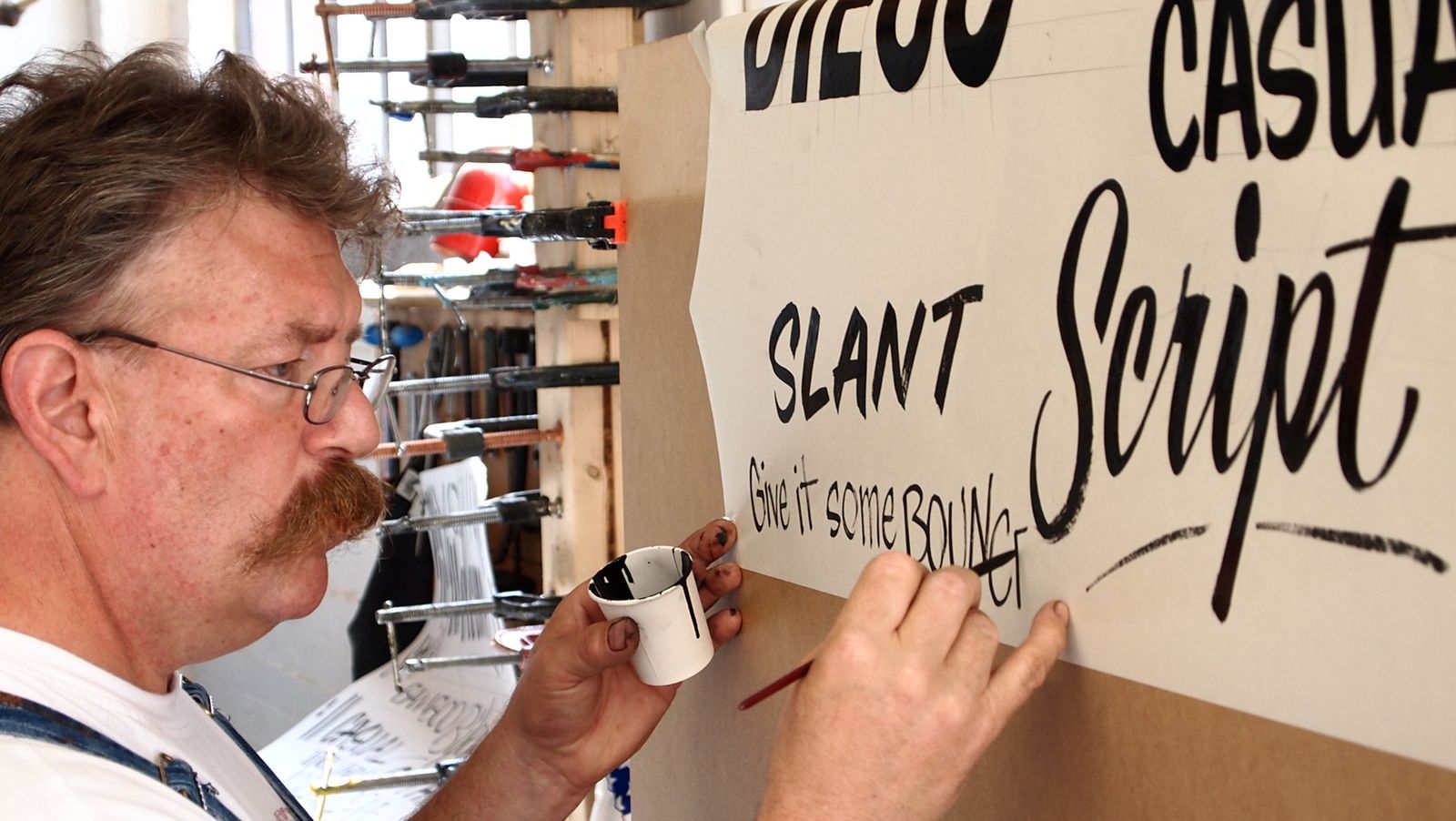 Mike Meyer teaching a hand-lettering workshop in London, June 2014. "The sign painting trade experienced a broader appeal, and gained worldwide attention, that it never had before!
"Make no mistake, as with any film, there are people who rave about it and people who complain about it. It is what it is, and I always try to keep on the positive side of any endeavour which helps the sign trade."
Mike Meyer / @this_is_the_real_mike_meyer
Mark Oatis"Sam and Faythe travelled to Las Vegas near the end of their filming schedule. I believe they decided to interview us as the result of their meeting with Keith Knecht, and in order to learn more about the origins of Letterheads. And they hadn't interviewed too many women sign painters, so were especially interested in Rose's opinions, and in her artistic career. We were lucky to be able to spend a full day together. It was fascinating to hear how their impressions of the sign painting craft had changed throughout the film's creation. I remember we served enchiladas and green chilli.
"I was invited to speak at several showings of the film, including in my hometown of Denver, Colorado. When presenting the film to professional organisations like AIGA (American Institute of Graphic Arts) and SEGD (Society for Experiential Graphic Design), there was a good deal of enthusiasm in the audience, and I was asked a lot of questions. It seemed that for those groups, the film lent legitimacy to sign painting.
"Sign Painters is now part of the foundation of contemporary sign painting—a point of pride which permeates the consciousness of a great many sign painters. It gave rise to numerous other documentaries which feature lettering artists at work. The film has helped to foster a greater interest in hand-painted signs, and respect for sign making practitioners and their traditions. The film focused on American sign painting, but its reach is international.
"I was originally uncomfortable about the extent to which informal, ‘self-taught’ sign painting was included in the film, alongside work produced by highly trained craftspeople. That prejudice was undoubtedly based in the fact of my own union apprenticeship. I have changed my perspective over time. Good lettering and layout can be learned by anyone willing to apply discernment, discipline, and rigor to the craft. Ultimately, in truth, we are all self-taught."
Mark Oatis
Damon StyerOn involvement with the film: "Gosh, that was so long ago that I had to go digging through email records to figure out when that came to pass. It looks like Faythe and Sam stopped by the shop in April 2010. We had just had an art show in the backroom gallery at Adobe Books, opening a month before. I remember that while that was getting prepped, Stephen Coles (who now manages the Letterform Archive) interviewed me for the FontShop ‘FontCast’, so maybe it was starting to seem like just a natural sort of thing, to take video interviews. I remember Stephen telling me how I had to meet this guy, John Downer, that he'd just interviewed—quite a character!
"Anyway, I think Jeff Canham, who had just ended his tenure at New Bohemia a few months earlier, had been contacted by a friend up in Portland or Seattle—maybe it was Sean Barton, I don't know—about some people travelling around the country looking to talk to sign painters. Jeff must've recommended to Faythe and Sam that they come by New Bohemia.
"I guess they interviewed both me and Caitlyn in the shop that day. Not sure if they talked more to her later. And we insisted they go talk to Bob Dewhurst at his wagon circle. I imagine we must've given them the contact info for Josh and Meredith at Best Dressed Signs in Boston, too. Josh had just left for there, not too long before all this, and not too long after Jeff split.
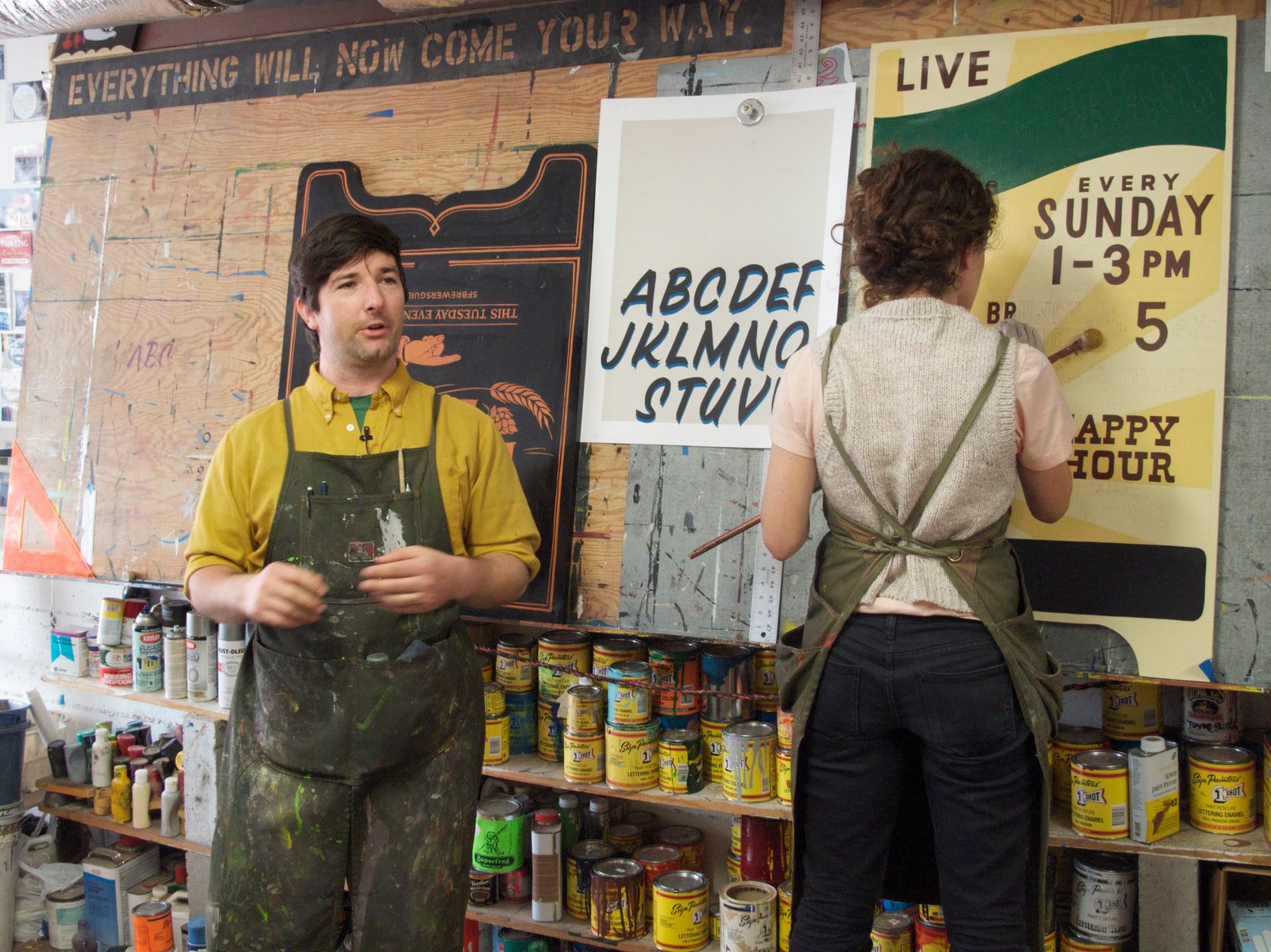 Damon Styer and Caitlyn Galloway at New Bohemia Signs during the filming of Sign Painters. "I'm still kicking myself that I didn't put Faythe and Sam in touch with Yvette at Mystic Blue Signs in New Orleans, from whom I bought New Bohemia at the turn of the century. I don't think it was 'til sometime later, getting back in touch, that Faythe mentioned she was particularly interested in how many women were involved in sign painting, so that would have been an excellent detour. Not like anything in New Orleans looks good on film, yeah? Oh well.
"Years went by. Actually, I'm surprised that it was only something like three and a half, 'cause in my mind's eye, it was easily seven years between the interviews and the film coming out. We moved shop, into a larger space, with room to hold workshops, and started doing those, on a monthly basis. Sometime around then, I think Sam called, wanting to get more photos for a book project that the Princeton Architectural Press had broached. The book came out before the film. I don't think we did any further interviews. I don't know if that's the case for everyone else in the book and/or film, but on my end, I was pretty impressed that there doesn't appear to be much, if any, overlap in my blather, between book and film. I thought it was terrific that they were able to edit those apart so cleanly!
"I wanted to do a book release party when it came out, and had a local shop interested in hosting. I think Faythe wanted to do something at Needles & Pens, a craft store whose proprietors, I think, she came to know on her earlier film project, Handmade Nation. But whatever: we all dropped the ball, missed the party opp."
On the film’s personal impact: "Well, I tell you, it's weird to show up at Letterheads things and be recognized, and weirder still to be thanked for inspiring total strangers! It's a good weird, but it definitely triggers an imposter syndrome reaction.
"Maybe it's just my experience from attending Letterhead meets in Europe and Asia over the past decade that I get the sense the Sign Painters film has been more of an international phenomenon, than anything that bears on day-to-day sign business, here in San Francisco. I don't get the sense that it's driven much of any business my way—with the exception of workshop students. I do get a student, now and again, in Intro to Brush Lettering workshops, who has seen the film. I get the sense that they were already interested in hand-lettering when they came across it, but it has undoubtedly kindled some measure of interest, and at least a few youngsters have specifically sought me out, on account of the film.
"One of my painters, Shinya, came here some eight years ago to intern for a few months, and that was on account of the film. He later flew me to Tokyo, to run a workshop, which we timed to coincide with the 2019 Letterheads meet there. And now he's back in San Francisco, working for me. So, that's the biggest solid manifestation of the film's effect within my life and trade."
On the film’s role in the wider trade: "As for the ‘wider sign painting trade’, I'm not sure I've got my finger on that pulse. I think San Francisco has always been a fertile ground for hand-crafted things and, especially within the Latino community, sign painting never really disappeared around here, to the extent that the film depicts it dying out in much of America.
"I'm not sure if the film raised the profile of painted signage in more rural areas of the country, or in other cities with less famously artsy (and/or immigrant) cultures. Maybe it helped pave the way for the transcontinental growth of the newer batch of billboard painting firms, like Colossal and Overall? I know Colossal was already going gangbusters, back then, so...
"Did the film have any hand in the success of the big Letterheads 40th anniversary meet, in Cincinnati, in 2015? I only heard about that meet via folk at a slightly more local Letterheads meet in Sonora, California, the year before, asking one another if anyone was going to it. For all I know, maybe I got invited to that Sonora meet on account of the film bringing awareness of New Bohemia Signs to the Sierras.
"I was not especially well socialised with other sign painters prior to then. I mean, I'd heard of the Letterheads, and maybe visited the online bulletin board that is/was somehow loosely affiliated with them, a few times. I'd occasionally talked by phone with Rick Glawson when I needed some gilding advice. In fact, I happened to call him on the morning of his heart attack! I can't even guess how I might have heard about that terrible turn of events, if I hadn't coincidentally called in the middle of it.
"But other than Bob Dewhurst, and an old semi-retired muralist and Korean War vet, Pete Kimack (rest in peace), the only other local sign painters I'd met, way back then, were the ones who hired me at New Bohemia, and Norma Jeanne, who had worked for New Bohemia earlier on, before opening Red Rider Signs, a block away. I remember Sean Starr came to work in San Francisco for a few years, before heading home to Texas, but I don't even understand how we didn't meet, in that time.
"Honestly, my impression of sign painters, based on the very few I'd met when I was first starting out, was that they all had wildly unruly hair, one wandering eye, and lots of conspiracy theories about the other sign painters. There did not appear to me to be much getting together going on.
"But since that big Cincinnati meet, it's been Letterheads in Europe every year, with a little Japan thrown in, ever since. There's a larger coterie of Bay Area sign painters now, and we've made a few efforts at local get-togethers, but the habit hasn't really stuck, yet. There are a lot more regional meets that I'm aware of—I'm bummed to have missed the recent Walldogs event, up in Oregon. I'm looking forward to attending the annual Conclave, in southern California, next week, a first for me.
"Anyway, what I'm trying to say is this: there's a lot more socialising and awareness among sign painters now than I knew of prior to the Sign Painters film. I can't state with any empirical certainty how much of that progress is due to the film, or due to the Letterheads having some social media success, or due to me just spending most of my spare time gazing at my navel, prior to now."
Damon Styer / @nbsigns
Roderick Lane Treece"I am, or was for years, involved in a group called ‘The Conclave’ that was started by Rick Glawson. Rick was the person who had dedicated his life to everything glass signs and gold leaf. He rediscovered the craft of gold leaf signs and reverse glass sign arts. He started a yearly invitational event called ‘The Conclave’ and, after his passing, the event continued.
"I had started to hear rumours about a young man and woman doing a documentary about sign painters, and so I started contacting them with the intension to have them attend an upcoming Conclave event in Bakersfield, California. They would have been able to meet some of the best of the best glass sign artists in the world at one gathering, but due to budgetary restrictions, they couldn’t make it.
A short video profile of Roderick Lane Treece. "At that time, I was good friends with Sean Starr who was living in Big Bear, California. He had decided to have a micromeet at his shop that summer. It turned out that Sam and Faythe had planned a road trip from Los Angeles to Las Vegas, visiting and interviewing sign painters along the way. Sean’s studio just happened to be along their direction of travel, and the timings worked.
"Sean called me and invited me to come up for the meet. I ended up being the only goldleaf glass sign painter there, so they decided to spend time filming my process and interviewing me, which of course ended up in the movie.
"I have to say though, there were a few people there that are much better sign painters than I will ever be, and who should have been included but were not. After the filming, which took place inside Sean's studio, we went outside and were casually interviewed by Sam and Faythe. All in all, it was a very pleasant experience, and quite frankly an honour to finally have someone consider what you've spent your life doing as worthy of such attention.
"The years since the book and movie came out have been a mixed bag for me. I know that some people were able to use as a stepping stone to bigger things, like Sean Starr and Mike Meyer. I had people reach out to me after seeing the moving that wanted to come and do a workshop which was nice, but I never felt it helped to bring more clients my way which has been sad in a way.
"I can't say for certain if it was the movie and book that created the boom in young people getting excited about sign painting again, but I'm sure it didn't hurt. I think social media has probably played the biggest part in its growth.
"The movie and book came out a very interesting time in sign painting’s history. Being the age I am, 67, I had felt that the craft, for me, was dying. Having Sam and Faythe come along with their dream helped spark those great memories of a lifetime of creating cool things. Of living a dream of being on your own, working and playing on your own terms. I see so many young people today that are trying to live the dream and I which them all the best.
"Lastly, and this is very important to me, I would like to send my love to the Late Robert Curry who also featured in the movie. He was an amazing human being and one of the best sign artists in the world."
Roderick Lane Treece / @customglasssigns
Phil Vandervaart"I have been painting signs for 45 years, 40 of these in Minneapolis. To be honest, I was never that good at small lettering, and not interested in it really—anything under two inches was a pain in the ass, and I didn’t want to be stuck inside with all the chemicals. I loved the thrill of painting outside on walls and storefronts, and I ended up being fairly good at it.
"What I tried to do was really put the business on the map (so to speak), staring at the blank building and visualising it by thinking like someone passing by looking for the business. I became well-known because I worked and delivered consistently for years in one place, and because I’m involved in the culture of Minneapolis.
"I got to paint all these iconic bars and restaurants. One of them, the Hard Times Café, is a collectively owned punk vegetarian cafe that the developer-drunk city government wanted to crush for their land which is right next to university. But they are still there 30 years later after endless police raids, inspector shutdowns, and the like. I painted the cafe in exchange for coffee for life, because they had no money. I just recently repainted it with a new layout—I got some community money and a food tab, as bartering is something I do a lot.
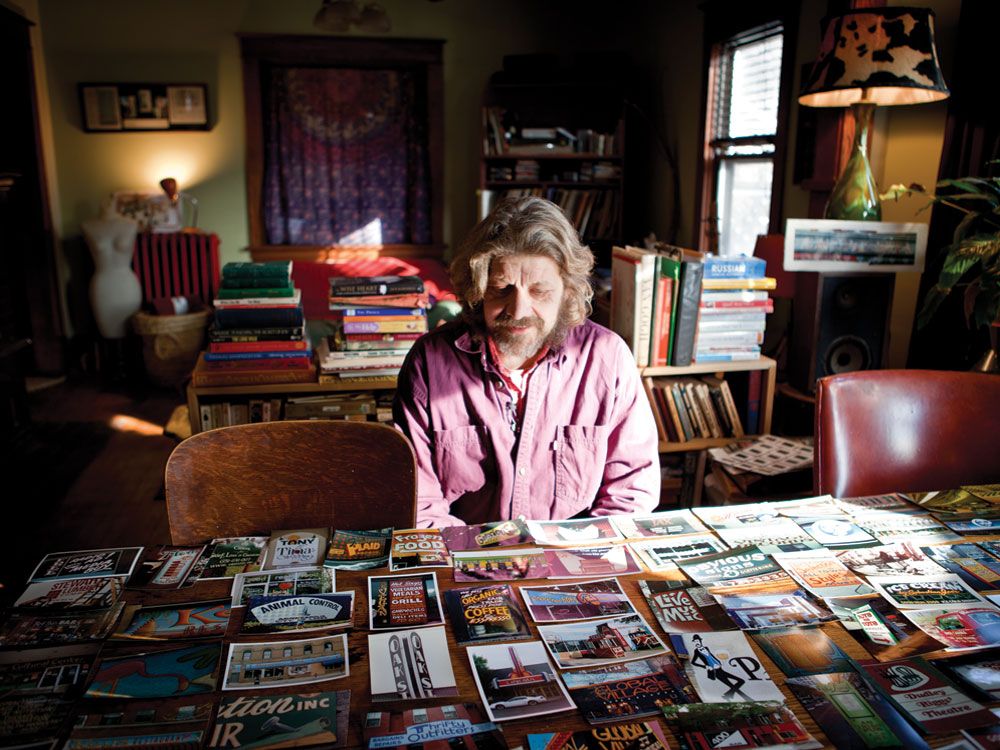 Phil Vandervaart with photos of signs he's painted. "It was at Hard Times that I first met Faythe [Levine] where she worked for a bit. It was a subject crying out for a book, although I have to say that two things that I’ve heard consistently for 45 years: 1) It’s a dying trade, and 2) It’s having a revival. I’m grateful to have been put in the book, but there are thousands of Sign Painters better than me in America. The recognition has been fun, plus it led to a public TV station doing a nine-minute documentary on me. (I made sure Forrest was in it too!). They still play reruns of it monthly because of its popularity ten years later. I get a lot of recognition from that, but it started with Faythe’s film.
"I can’t really say I got work out of it, but it’s hard to tell. I think the book and film probably boosted interest in the trade, although I do wish they’d interviewed more women and people of colour because they are out there.
"I’ve never really participated in the Letterheads community, even though it started up about the time I started painting signs. I went to a few meetings but was turned off by all the right-wingers. I feel my occupation is also my vocation, and use it for social good as well as a living.
"About 22 years ago I met Forrest [Wozniak]. We painted a lot together, me showing him sign painting, him showing me business skills. We have a great time working together and cutting up with good humour. He is now a journeyman in his own right, and actually a much cleaner painter than I am.
"If I had to say anything to a new painter, it would be to learn to give a good finished product before you worry about the money. Get over your ego which automatically gets wrapped up in the money. in an early experience of mine, I was in a big sign shop and was asked to paint a line of block lettering across the bottom of a large sign. I struggled through it, then the old painter in the shop looked at it asked me to walk back 30 feet, look at my work, and tell him why it looked like shit. This was a formative experience for me and I never forgot it—humility is key to me."
Phil Vandervaart
Forrest Wozniak"I became involved in the film because I worked closely with Phil Vandervaart as my sign painting mentor. I am also old friends with Ira Coyne, Sean Barton, Von Sven Lynch, Japhy Witte and Faythe Levine. I grew up in the inner city of South Minneapolis, and all of the above lived there as well at times.
"In the late 1990s, the landscape of the West Bank was aesthetically determined by Phil Vandervaart’s signs. As young people, the Bohemian landscape of the West Bank influenced our minds and culture. We were lucky to come up in an anti-corporate and artistic landscape. It seemed to be the very tail end of what was left of the Twin Cities part of the rust belt, and that was our playground. I trust that this played a role and helped influence Faythe to make the documentary. Sean, Sven, Japhy, and Ira helped me to make something of myself, and believe that I could be a sign painter when I grew up. Phil solidified that goal with traditional values.
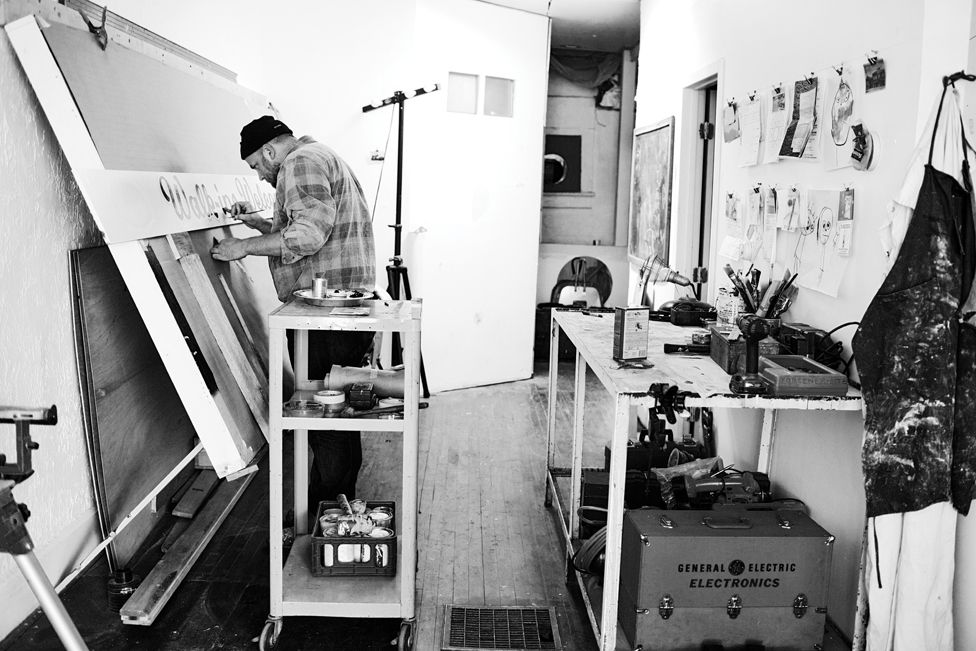 "Before that movie came out, I was still working construction to raise my kids. I painted signs as well, but as part of my diversified self-employment strategy. That movie and book solidified the popularity of sign painting in the larger diaspora of American culture. It’s important for me to note that sign painting in America always has survived among the common people, immigrants, the poor, and at times the fine artists. But this documentary brought Sign painting to a broader audience, most notably it revisited the art world.
"Before the movie came out, I typically worked, for example, for car mechanics, who then told there buddy at church, or for my friends. After that movie came out, I worked for everybody, including a lot more boutique clients. It ultimately allowed me to take the leap and quit construction. I have been a full-time sign painter ever since, and I will forever be grateful to Faythe and Sam, and the role that documentary played in my success.
"A lot of kids are doing it, but if that helps defend against generic plastic landscapes then that’s good. I just hope the up and comers pay respect to those who came before them. You’ll never be the first, and you’ll never be the last, so be easy and good to your elders.
"I share my trade with the young. Older people taught me, therefore giving me a good future in the trades, and I return the same favour. A lot of what I teach is the mentality behind wanting to see people do well."
Forrest Wozniak / @forrestwozniak
And Finally...Mark Oatis also shared this recording of directors Faythe Levine and Sam Macon discussing the film at the time of its release.
Sign Painters' Anniversary Watch PartyMore FilmsSign Painters' Reprise
|

